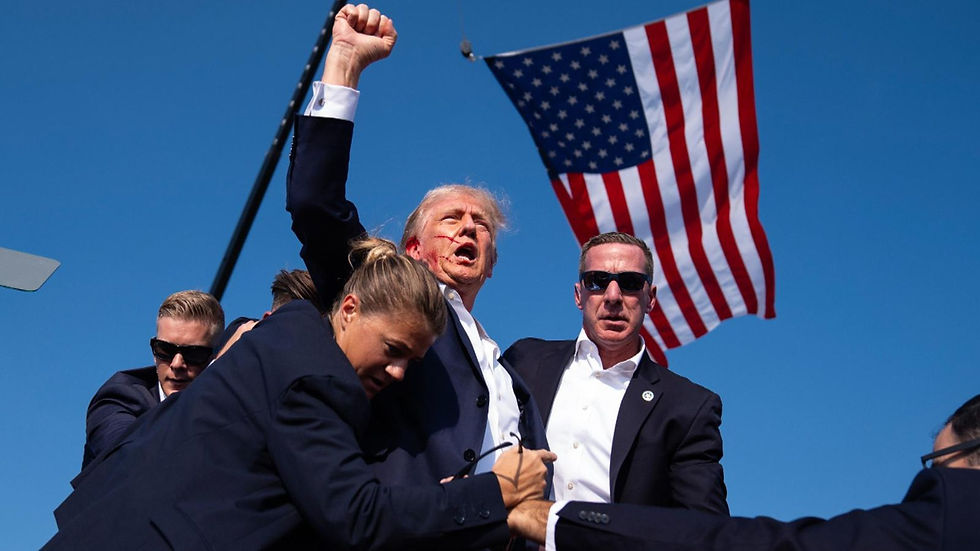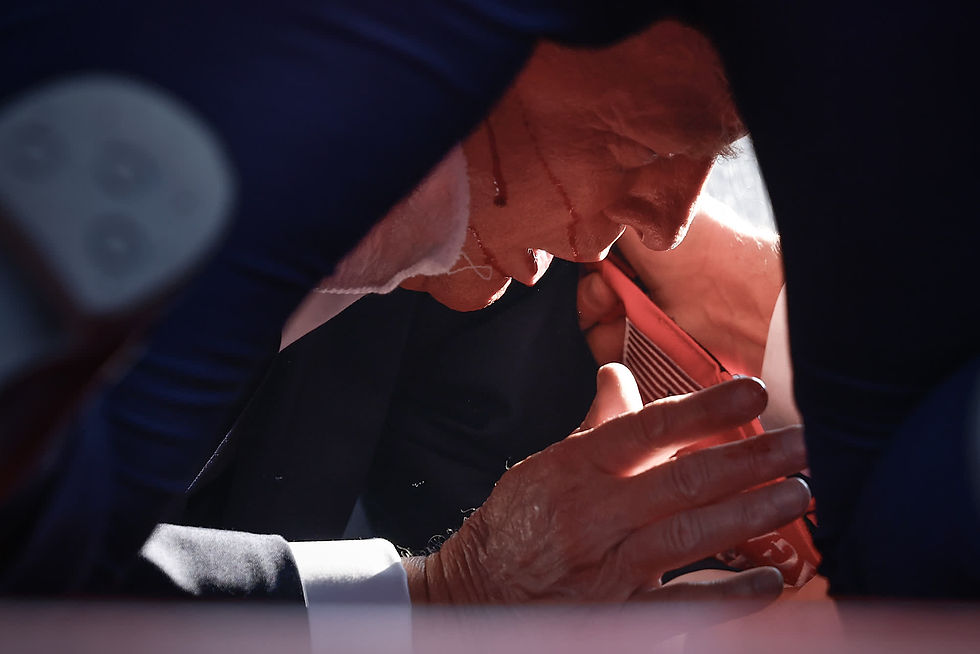
Whether we like it or not, Trump has always known how to (unintentionally) inspire contemporary art. During his years in office from 2016 to 2020, we have had to deal with an enormous amount of illustrations, caricatures, drawings made by cartoonists, comedians and meme creators, who have depicted him in every possible and imaginable way.

Just think that in the early 2000s, artists such as photographer Andres Serrano, portrayed Donald Trump in the guise of the famous “rogue” real estate developer from The Apprentice. It this period Trump limited himself to giving interviews where he professed to be “more Democrat than Republican” and made cameos in films.
Today, after the attempted assassination of 14th July, the image of a bloodied Donald Trump, with his fist raised, stands out above all. Taken by Associated Press journalist Evan Vucci, the image captures the immediate aftermath of the assassination attempt at his campaign rally in Pennsylvania. Some US media outlets have described the images from that day as iconic. Some say they have the potential to alter the course of the presidential election; others have commented on the photography’s lasting legacy in the video age.

Ron Burnett, a former president of the Emily Carr University of Art and Design in Canada and an image expert, said the images of the assassination attempt only strengthened Trump’s campaign narrative: “The photo fits very well with the kind of way he’s approached every step of this, let’s call it, battle, because he sees it as a battle. The photo suggests, among many other things, that Trump is at war and that he’s in constant danger.” For Vucci, capturing the shooting and its aftermath was a priority: “I knew this was a moment in American history that needed to be documented,” he said. “I mean, it’s our job as journalists to do that job.”
This image could easily become the new cover of Time: but the magazine's circulation would be dwarfed by the many shares already made around the world. On my smartphone, the news photographs have already rapidly become memes (the bloody ear has become, for example, a reaction to listening to Katy Perry's new album) even before the originals have reached the television screen.
Photographers Mills and Moneymaker, who were also there, had the same reaction: “I’m there to do my job,” said Moneymaker, a photographer known for capturing a close-up of a bloodied Trump slumped on the ground. “All of a sudden, the story was unfolding. I just had to keep taking pictures.”

Mills said he’s never experienced anything like it in his more than 40 years of covering U.S. politics. “It was very scary,” he told the Post. “I’m still trying to process it all,” he said. Mills said he frantically sent photos to his editor in New York as soon as he got backstage when it occurred to him that he might have captured the moment Trump was shot. “He called me back about five minutes later and said, ‘You’re not going to believe this.’ I was like, ‘What?’ I thought I had done something wrong," he said. "And she said, 'No, no, you caught the bullet going through his head.'" Mills said he had his finger on the shutter at the time, with the shutter speed set to 1/8,000 of a second. "A forensic expert told me the odds of it being successful are between one in a million and one in 5 million, because they tried to do it, fake it, and it's very hard to catch a bullet flying like that," he said. "I couldn't believe it. I still can’t believe it,” she said. “That this happened was, again, a tremendous blessing.”

Moneymaker said she considers Mills and Vucci her mentors and that being with them on Saturday helped her move forward. “I’m in this amazing company, with all these brave people, and so I think that was when I tried to hold on and make them proud,” she said. Vucci said he hasn’t fully processed what happened on Saturday or the impact of his photo, but he’s proud of their collective work: “We have a long history of amazing photojournalism,” he said, “and I’m happy that when it was my time to hold the bar, I was able to hold the bar.”
by FRANCESCO SARCINELLA


Comments